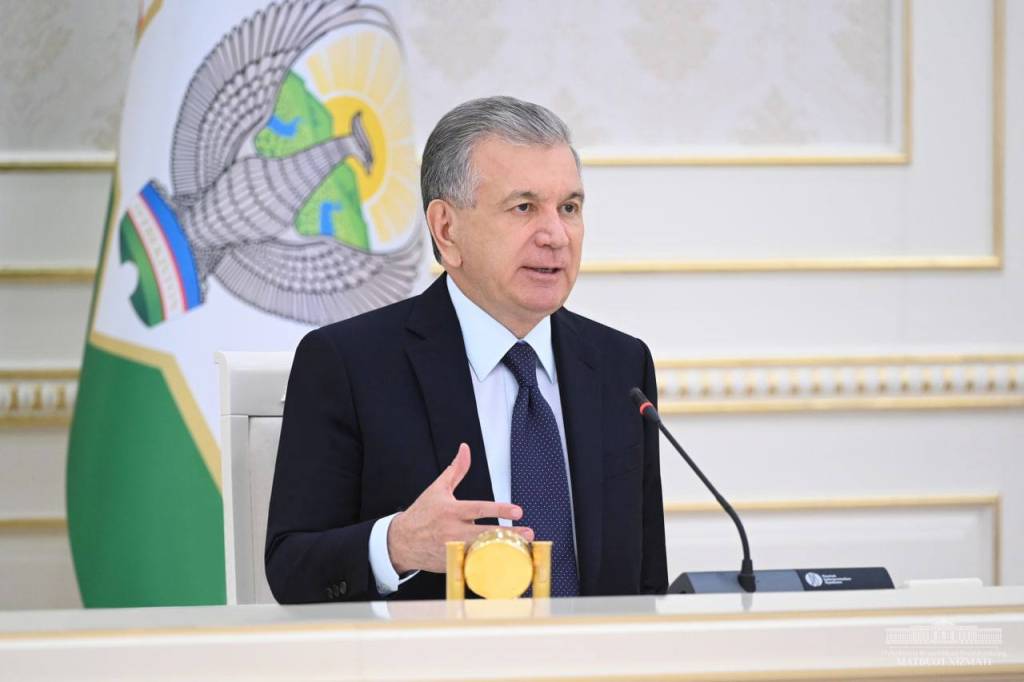The state of Kashkadarya’s development analyzed, further tasks defined

On October 25, President Shavkat Mirziyoyev chaired a meeting on measures of socio-economic development of Kashkadarya region.
As is known, in April 2022, an extraordinary session of Kashkadarya Regional Council of People’s Deputies was held, at which large-scale plans for the development of entrepreneurship and industry, employment, and social protection of the population were defined.
In particular, this year it is planned to create 10 thousand business entities and bring their number to 80 thousand, attract 9 trillion UZS of investments, implement 810 industrial projects, and create 430 thousand new jobs. In agriculture, it is planned to distribute 12.5 thousand hectares of land to the population, harvest 3.2 million tons of food products, create 11 thousand hectares of intensive orchards and vineyards, and increase the export of fruits and vegetables to $60 million. In the social sphere, it is planned to build and repair 174 schools, kindergartens and polyclinics, lay 1.5 thousand kilometers of drinking water supply networks and repair 1.8 thousand kilometers of internal roads.

At the meeting, Kashkadarya region’s Hokim M.Azimov presented a report on the work carried out in this direction. Based on the report, the tasks for the end of the year and the next year were discussed.
Priority attention was paid to the development of entrepreneurship and the service sector. It was noted that 207 thousand of jobs will be created next year.
To do this, it is necessary to use the existing potential. In particular, 3 thousand entrepreneurs can be attracted to organize roadside service along the Shakhrisabz – Kitab highway with a capacity of 1.5 thousand cars per hour. There is an opportunity to create 10 thousand jobs through the development of tourism in the villages of Miraki of Shakhrisabz and Kaynar of Kitab district. Efficient use of empty buildings and land plots is required.

Another driver of the region is industry. It was noted that 960 projects can be implemented here and 20 thousand people can be employed.
In particular, there is an opportunity to develop 22 non-metallic deposits and establish the production of demanded construction materials. Through industrial cooperation, it is necessary to implement 65 localization projects in the chemical, oil, gas, and energy industries. 12 projects proposed by clusters will increase the level of deep processing of cotton.
The third important area is agriculture. In particular, it is possible to grow products for an additional 90 billion UZS by improving water supply on 18 thousand hectares of land, to save 300 million cubic meters of water by the introduction of water-saving technologies on 66 thousand hectares, to provide employment for 32 thousand families by reducing acreage for cotton and grain on 10 thousand hectares. In general, 295 thousand of people can be employed with proper use of opportunities in the agricultural sector.

Social issues were also discussed at the meeting. In particular, it was instructed to bring the level of centralized drinking water supply in Kashkadarya to 60 percent next year, and repair 6 thousand kilometers of internal roads and bridges.
Measures were defined for the construction of preschool education institutions and polyclinics in mahallas, improving the conditions of the population in need of housing.
At the meeting, hokims of the region and districts made proposals on solving the problems of unemployment and infrastructure, a positive experience worthy of widespread implementation.

Based on them, it was decided that 685 billion UZS will be provided in the republican budget for 2023 to develop entrepreneurship, improve infrastructure and solve problems in the social sphere in Kashkadarya.
It was also noted that 135 billion UZS will be allocated to mahallas of the region within the framework of the Participatory Budgeting, and another 265 billion UZS will be allocated for the implementation of 670 projects.

In addition, in 2023 and 2024, it is planned to allocate an additional $410 million for drinking water supply and road projects.
It was emphasized that by the end of this year, reports of all regional hokims will be reviewed in the same way, and an investment program for the next year will be formed based on the decisions taken following the results.
UzA








